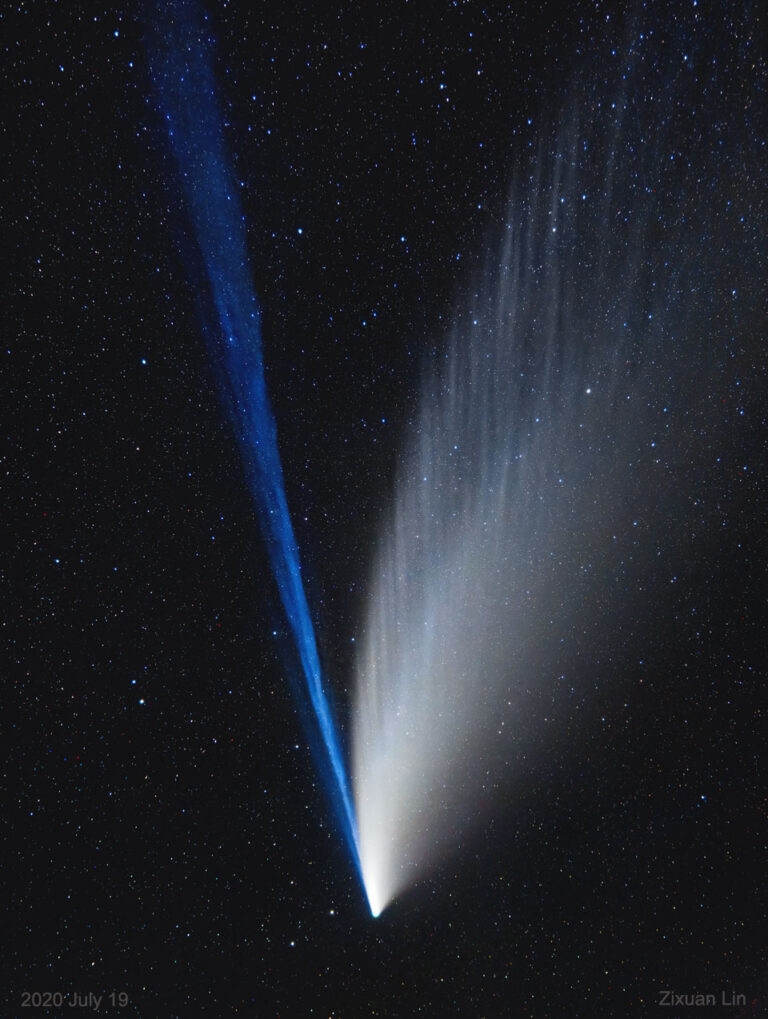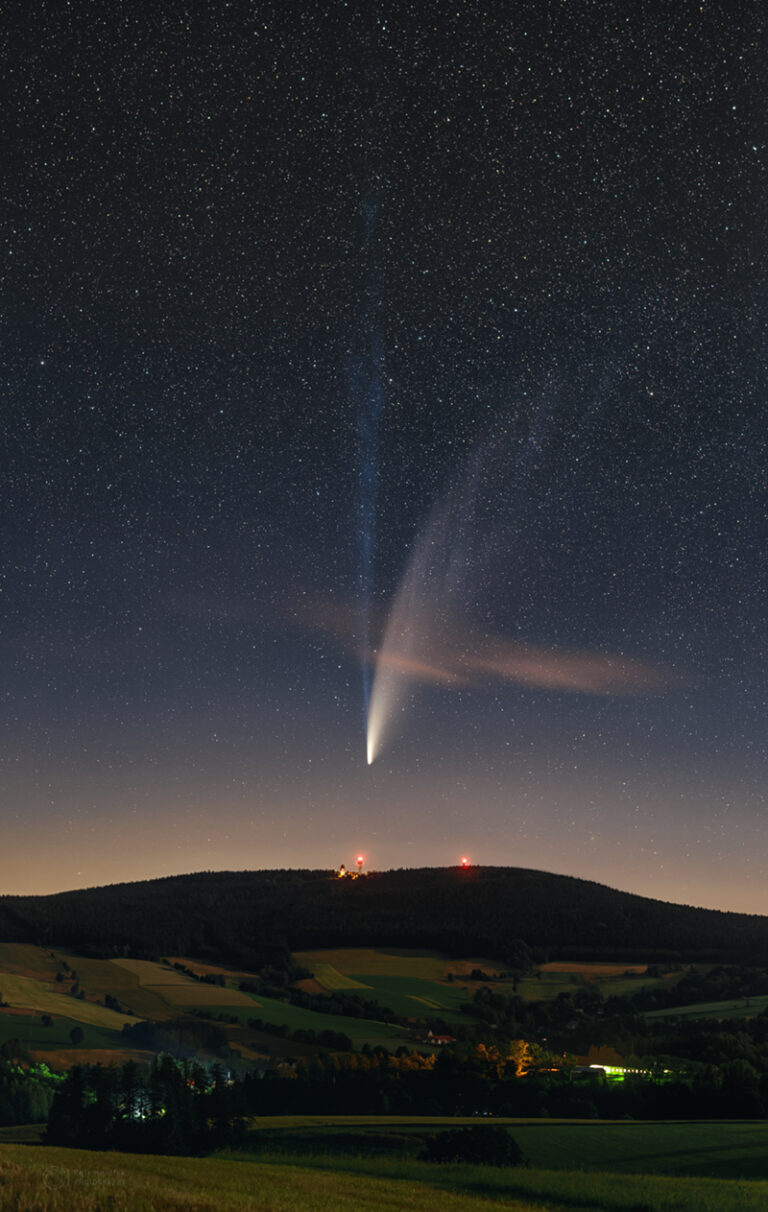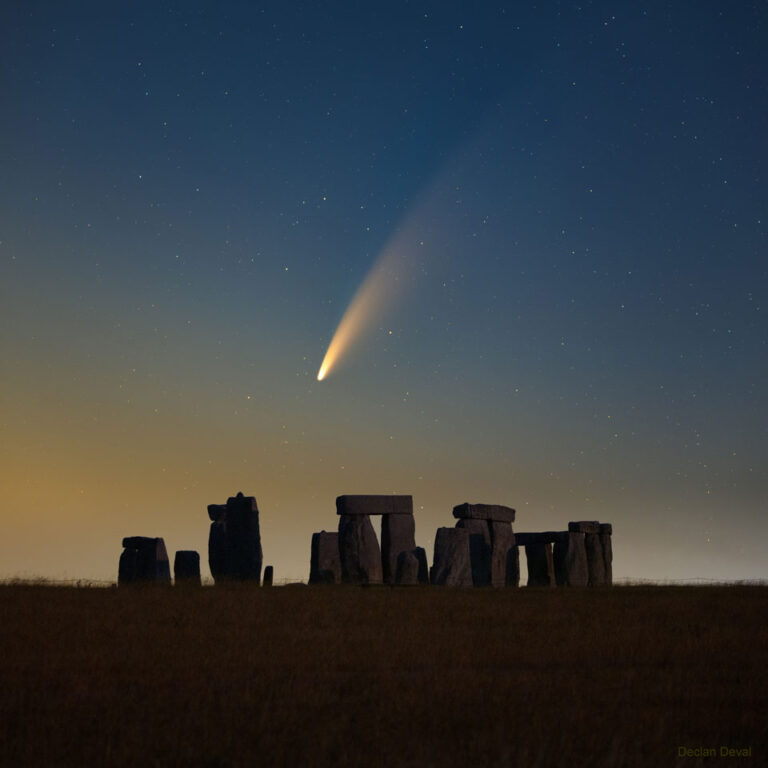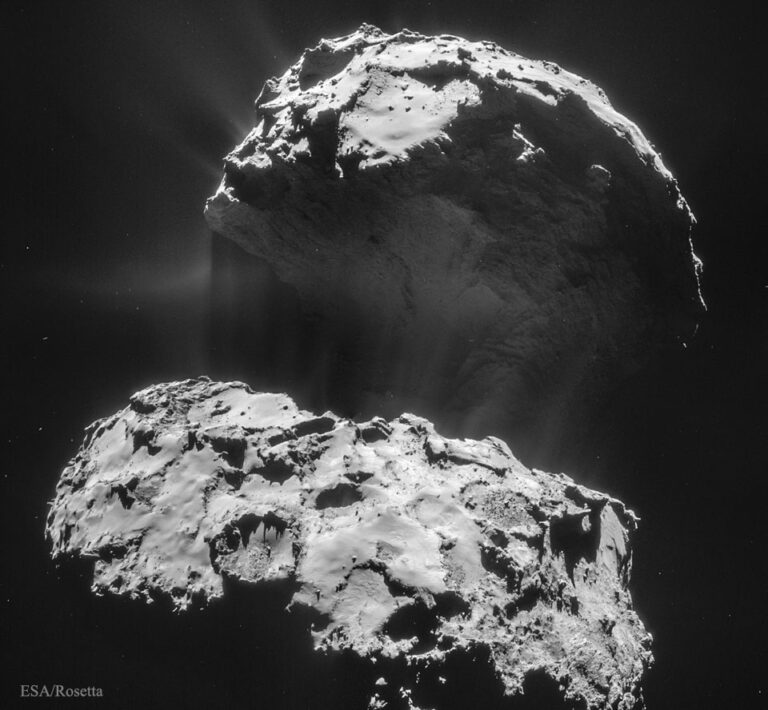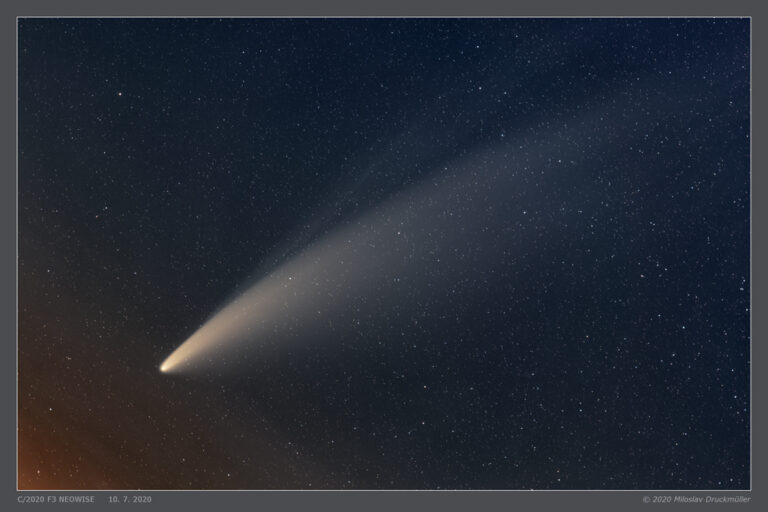2020年7月14日 Comet NEOWISE over Stonehenge Image Credit & Copyright: Declan Deval Explanation: Have you ever seen a comet? Tonight — and likely the next few nights — should be a good chance. Go outside just at sunset and look to your northwest. The lower your horizon, the better. Binoculars may help, but if your sky is cloudless and dark, all you should need is your unaided eyes and patience. As the Sun sets, the sky will darken, and there will be an unusual faint streak pointing diagonally near the horizon. That is Comet NEOWISE. It is a 5-kilometer-wide evaporating dirty iceberg visiting from — and returning to — the outer Solar System. As the Earth turns, the comet will soon set, so you might want…



